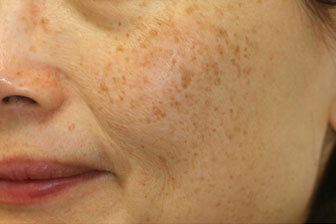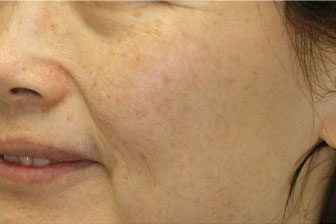OR CALL OUR CLINICS
OR CALL OUR CLINICS
BARNET
SELECT YOUR TREATMENT
The colouring of the skin, hair, mucous membranes and retina of the eye. Pigmentation is due to the deposition of the pigment melanin, which is produced by specialized cells called melanocytes. Other pigment-related terms include hyperpigmentation (too much pigment), hypopigmentation and under-pigmentation (too little pigment), and depigmentation (loss of pigment).
HC MedSpa provides a perfect blend of advanced aesthetic treatments,
premium beauty services and positive lifestyle enhancement.
There are several types of skin pigmentation disorders with different causes and symptoms. Hyperpigmentation is a common, usually harmless condition in which patches of skin become darker in colour than the normal surrounding skin. Melasma is also a relatively common skin condition, characterized by patchy, tan to grey-brown facial discolorations. Chloasma is a temporary condition, typically caused by hormonal changes, in which melanin is over produced and large brown patches form on the skin. Age spots, sometimes called liver spots, are a form of pigmentation. The small, dark spots are found generally on the hands and face, but any area exposed to the sun can be affected. Skin can look dull, pigmentation and age spots start to appear and wrinkles become more prevalent. Freckles (Ephelides) found on the skin can be classed as a form of hyperpigmentation. They are usually multiple in number. PIH or Post-Inflammatory Hyperpigmentation is a type of pigmentation that usually occurs after some type of injury to the skin. It can commonly occur after acne spots or other skin lesions, or after traumatic skin treatments such as inappropriate or overly aggressive laser, or after overuse of some skin products. Hypopigmentation is the absence of normal amounts of melanin (the chemical that gives skin its color), caused by disease, injury, burns or other trauma to the skin. When the skin cells that produce melanin (melanocytes) reduce their production, this results in hypopigmentation (loss of skin color), or also known as skin depigmentation. The three common types of hypopigmentation and pigment loss are sun damage, vitiligo and albinism. If the skin has had an infection, blister, burn or other trauma, it might result in the loss of pigmentation in the affected area.
The main causes of pigmentation are excessive sun exposure, medication, genetics, disease, acne and hormonal imbalances.
One of the best ways to avoid pigmentation is to fastidiously apply a sunscreen with a minimum SPF of 30+, which will block both UVA and UVB light. If outdoors, the sunscreen needs to be applied every three to four hours. Topical creams containing hydroxy quinone, tretinoin, topical steroids, alpha hydroxy, acid creams, azelic acid or kojic acid should be used at nighttime, together with sunblock during the day. Oral use of antioxidants also helps in reducing pigmentation. If creams do not work, chemical peels, microdermabrasion, or fractional lasers are further treatment options. These procedures require multiple sessions at intervals of one to four weeks.
Darker skin tones are more prone to hyperpigmentation. Melasma is more prevalent among those of Hispanic, Asian, Middle Eastern and African origin, and those taking oral and topical contraceptives. With Melasma, only 10% of men are affected. Chloasma mainly occurs in pregnant women, which is why Chloasma is also known as the "mask of pregnancy". Some pigmentation, like age spots, come with ageing and are determined by how much sun the skin has been exposed to throughout the years. Freckles are more commonly found in fair-skinned complexions, with red or blonde hair, and less commonly in individuals of other races. Pigmentation from PIH is an after result of acne, skin lesions, or traumatic skin treatment. Hypopigmentation mainly relates to those with sun damage, vitiligo and albinism.
Drag the directional arrow left & right to view
Before and After photos


Hena Group Limited, Company number: 05338032
© 1993 - 2024 Sitemap
